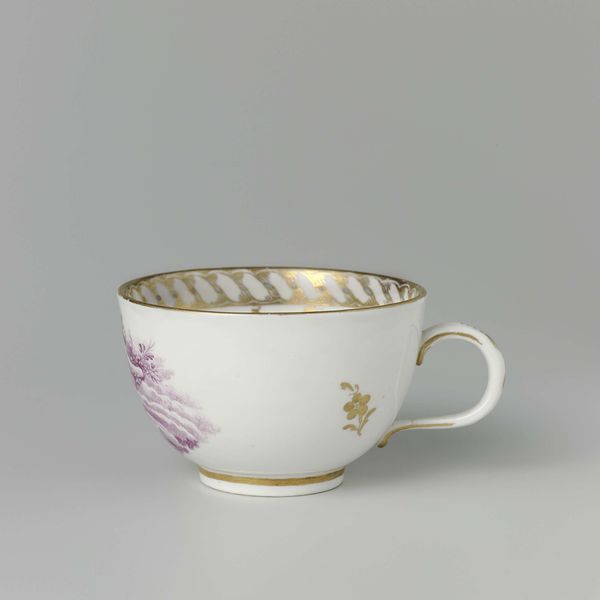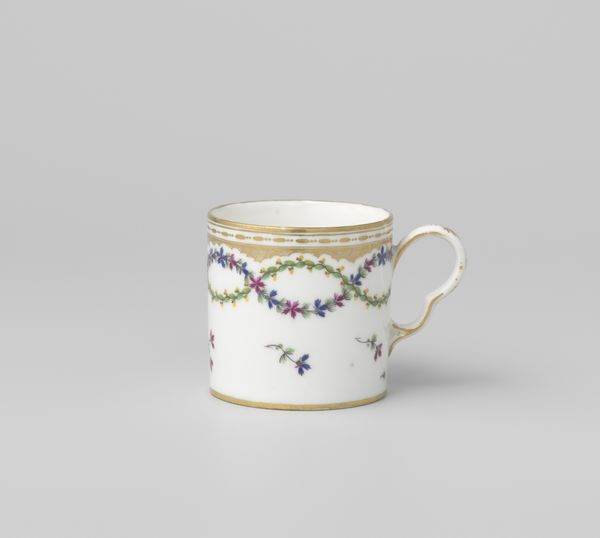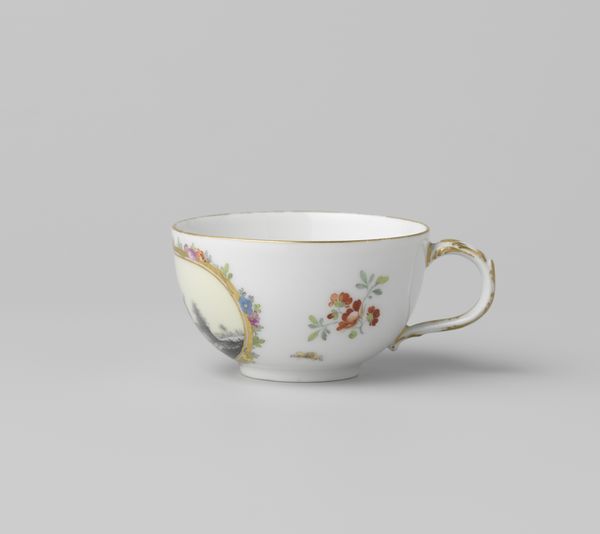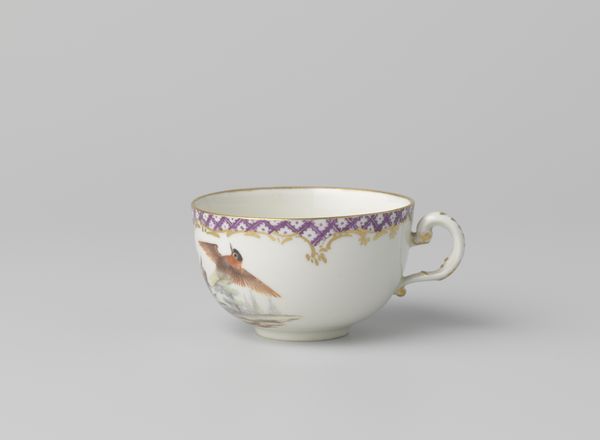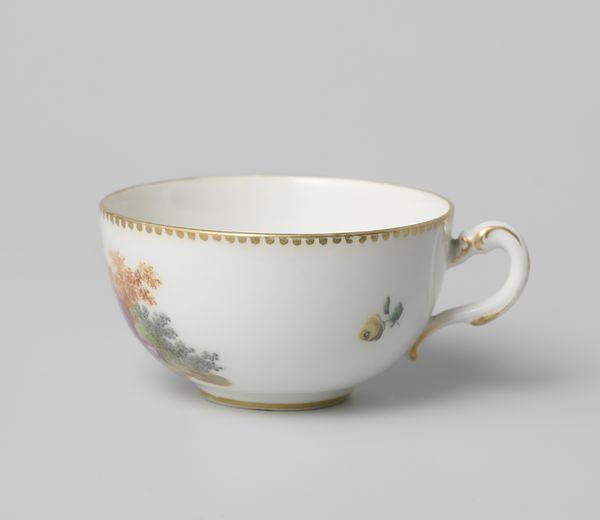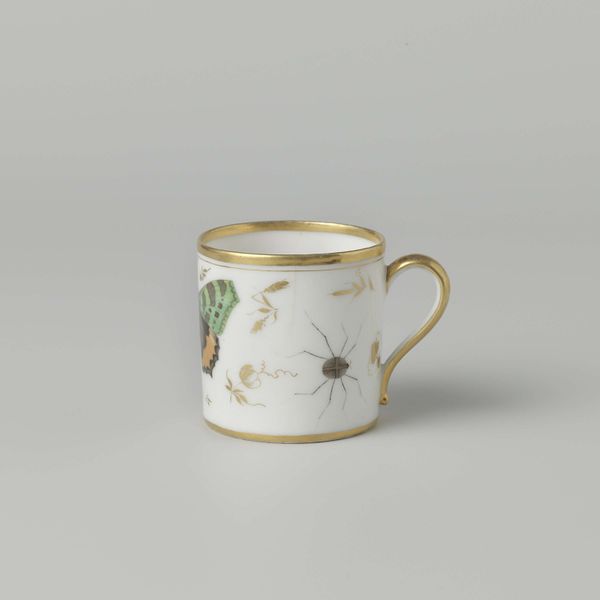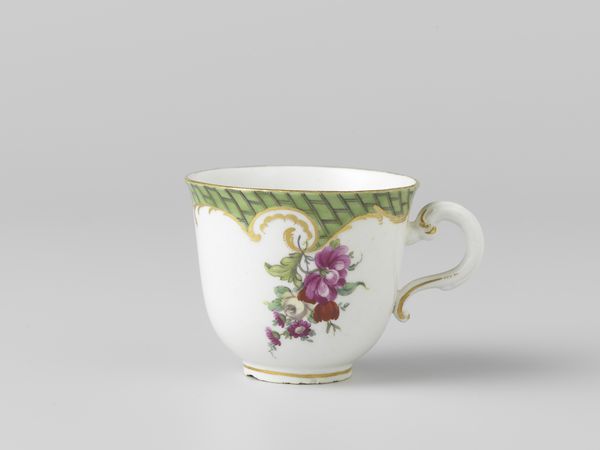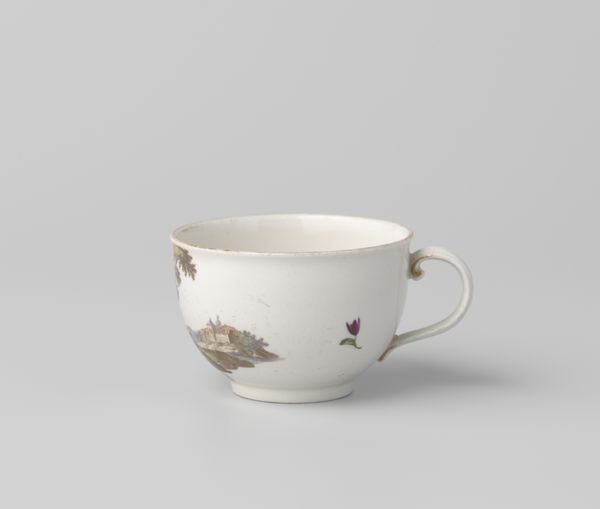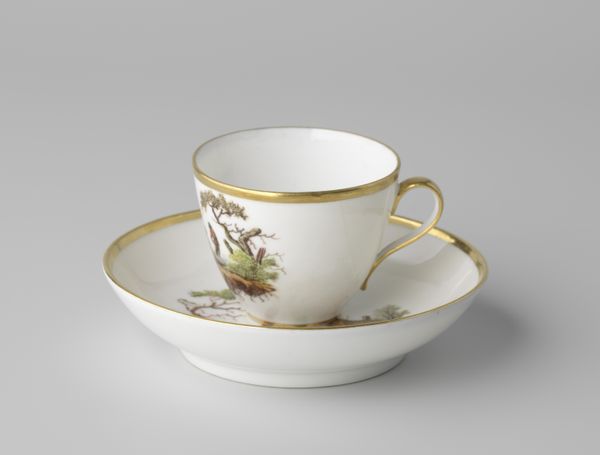
Dimensions: height 5 cm, diameter 7.8 , diameter 3.7 , width 9.2 cm
Copyright: Rijks Museum: Open Domain
Editor: So, this is a "Cup with a water landscape and garlands," made by Wallendorf around 1780-1800, in earthenware. The cup has this serene, almost picturesque scene painted on it. How do you interpret this work? Curator: I see more than just a decorative object. Considering the era, late 18th century, this cup speaks to the rise of leisure and the idealized depiction of nature amongst the elites. It's Rococo, decorative, yes, but also telling of social values. What does the "water landscape" evoke for you? Does it project authority, perhaps even oppression? Editor: Oppression? I mainly saw it as an escape into nature. Curator: Exactly, but *whose* nature, *whose* escape? Land ownership at the time was a charged issue. The pastoral scenes were often a fantasy detached from the realities of agricultural labor and rural poverty. It almost romanticizes and appropriates it. Consider also who owned and used such fine porcelain. Editor: I didn't think about it that way! So, the cup, besides its function, is a status symbol that perhaps unintentionally masks inequalities? Curator: Precisely. These objects participate in larger discourses of power, privilege, and representation. What does adorning the cup with these scenes accomplish for the user? Does it normalize the landscape, and obscure their place and impact in that landscape? The cup is an intersectional microcosm. Editor: This is fascinating. It's amazing how much context is embedded in this small object. It completely reframes my perception. Curator: Indeed. Everyday objects can be powerful storytellers. Recognizing these narratives is crucial.
Comments
No comments
Be the first to comment and join the conversation on the ultimate creative platform.
